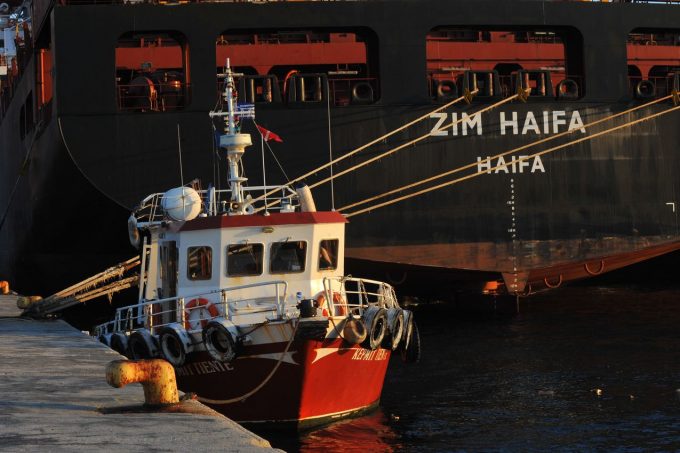Container spot rates have peaked as all major trades see prices fall
There was more evidence in this week’s container port freight markets that peak prices on ...
TFII: SOLID AS USUALMAERSK: WEAKENINGF: FALLING OFF A CLIFFAAPL: 'BOTTLENECK IN MAINLAND CHINA'AAPL: CHINA TRENDSDHL: GROWTH CAPEXR: ANOTHER SOLID DELIVERYMFT: HERE COMES THE FALLDSV: LOOK AT SCHENKER PERFORMANCEUPS: A WAVE OF DOWNGRADES DSV: BARGAIN BINKNX: EARNINGS OUTODFL: RISING AND FALLING AND THEN RISING
TFII: SOLID AS USUALMAERSK: WEAKENINGF: FALLING OFF A CLIFFAAPL: 'BOTTLENECK IN MAINLAND CHINA'AAPL: CHINA TRENDSDHL: GROWTH CAPEXR: ANOTHER SOLID DELIVERYMFT: HERE COMES THE FALLDSV: LOOK AT SCHENKER PERFORMANCEUPS: A WAVE OF DOWNGRADES DSV: BARGAIN BINKNX: EARNINGS OUTODFL: RISING AND FALLING AND THEN RISING

After recording a net loss of $67m in the first six months, Zim is focusing on slashing costs by collaboration with competitors and hiking average revenue per slot.
It hopes to achieve the latter by the launch of more premium services.
The Israeli ocean carrier’s strategic cooperation with 2M partners, Maersk Line and MSC, on the Asia-US east coast tradelane, will see six loops consolidated into five from 12 September.
Under the four-year deal with the 2M alliance, Zim will drop one of its strings and purchase around 3,000 slots each week from Maersk and MSC.
As a result, on the expiry of time charters, Zim will be able to hand back six panamax ships to owners, saving some $22m a year in charter hire, besides substantial fuel and port costs.
Zim’s president and CEO, Eli Glickman, said last week: “This agreement is expected to bring considerable efficiencies and savings, along with a far improved service portfolio, supporting Zim’s strategy, going forward.”
The tenth-ranked carrier charters around 90% of its 84-ship, 414,500 teu-capacity, fleet, which is by far the highest ratio of any of its peers – Yang Ming’s fleet of 70% of leased tonnage the next largest.
Consequently, Zim has suffered more than its competitors this year from the rebound in charter rates.
This factor was alluded to in Zim’s Q2 interim result commentary, with the carrier attributing the blame for the red figures on a combination of decreasing freight rates, higher bunker prices and the continued increase in charter hire rates.
And Zim today announced an upgrade in its own India Med Express Line (IMX) service, also starting next month.
The carrier is claiming its “fastest-on-the-trade” rotation, between Sri Lanka, India and East Mediterranean ports, will reduce “significantly” headhaul transit times at some ports “by a week to 10 days”.
Zim’s executive for the sector, Rani Ben-Yehuda, claimed: “Zim now offers the fastest and most reliable service between the India sub-continent and the Eastern Mediterranean. We continue to upgrade and improve our services, as part of the Zim vision and our customer oriented approach.”
Zim transported 1.47m teu up to the end of June, representing a 17% increase on the same period of 2017. However, its volume growth was achieved at the expense of revenue, which improved by only 11% to $1.55bn, achieved from a 6% decline in its average rate to $922 per teu.
And with fuel prices up by around 40%, together with the jump in charter costs, Zim’s growth strategy for 2018 proved to be a recipe for a trading deficit – similar to most of its liner peers.
However, with the 2M deal and its new premium focus, it would appear now that the carrier has decided on a more judicious growth policy.
Comment on this article